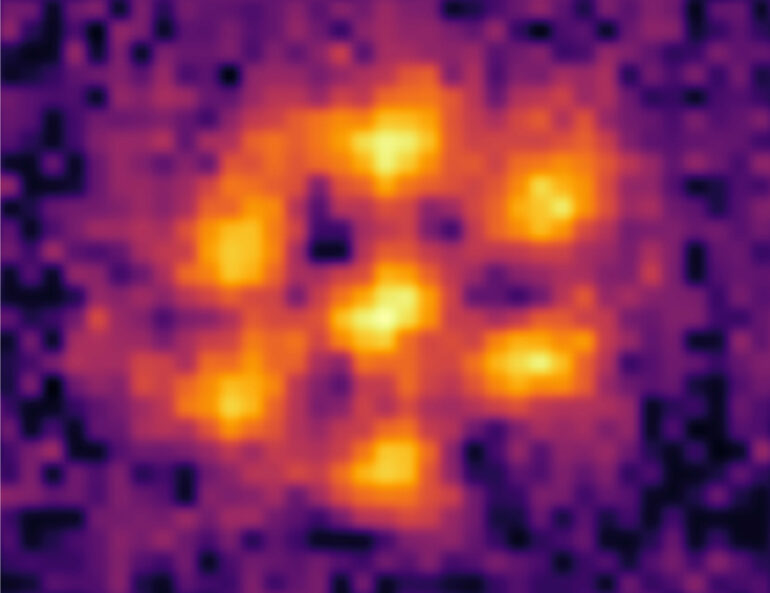n a new study, investigations led by Francesca Ferlaino and Russell Bisset show how to cool an atomic gas into a supersolid with a circular, 2D shape. The method will allow researchers to further study these exotic states of matter and search for features such as turbulent vortices.
In recent years a new state of matter has appeared on the scene: the supersolid. This has both the crystal structure of a solid and the properties of a superfluid, a quantum fluid that can flow without friction. The team led by Francesca Ferlaino from the Department of Experimental Physics at the University of Innsbruck and the Institute of Quantum Optics and Quantum Information at the Austrian Academy of Sciences in Innsbruck was among the first to generate supersolid states in ultracold quantum gases of magnetic atoms. Now they show that an established method for forming supersolids in a one-dimensional crystal—by tuning how the particles interact with one another—fails to reach supersolidity in two dimensions.
“However, by developing a new theoretical technique we demonstrate that cooling a gas of magnetic atoms directly into the supersolid regime is a viable method for creating large two-dimensional supersolids,” says Thomas Bland, first author of the new study in Physical Review Letters. For this the researchers use round, pancake-shaped traps. This led the team to the experimental observation of the first supersolid in a round trap to create a nearly circular 2D supersolid. This follows the same team’s observation last year of the first 2D supersolids in elongated geometries. These experiments open the door to future theoretical studies of the crystal growth. “For example, in a two-dimensional supersolid system, one can study how vortices form. These vortices described in theory have not yet been demonstrated, but they represent an important consequence of superfluidity,” says Thomas Bland.
More information:
T. Bland et al, Two-Dimensional Supersolid Formation in Dipolar Condensates, Physical Review Letters (2022). DOI: 10.1103/PhysRevLett.128.195302
Provided by
Universität Innsbruck
Citation:
Cooling a gas of magnetic atoms to create large two-dimensional supersolids (2022, May 16)
